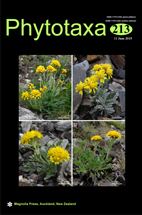Abstract
Polyphasic taxonomic studies have been largely conducted at genus/species levels in cyanobacteria, leading to the description of numerous cyanobacterial genera and species. The present study describes a new cyanobacterial species Stigonema dinghuense, sp. nov. Song et Li based on the combination of morphological, genetic, and ecological evidences. This new species was collected from a wet rocky wall in Dinghu Mountain, Guangdong Province, China. Stigonema dinghuense was morphologically similar to Stigonema mamillosum, the type species of the genus, however, Stigonema dinghuense grew on the rocky wall in subtropical region and the type species Stigonema mamillosum inhabited in subfrigid and frigid zones, reflecting a relatively large difference in ecology. 16S rRNA sequences based phylogeny revealed that all the Stigonema species/strains reported so far, including S. dinghuense, grouped into a monophyletic cluster. Phylogenetic analyses based on 16S rRNA, nifH and rbcLX gene sequences yielded the congruent support for the monophyly of heterocytous cyanobacteria. The true branching cyanobacteria (formerly Stigonematales) were separated into four major groups, three of which intermixed with Scytonemataceae.

